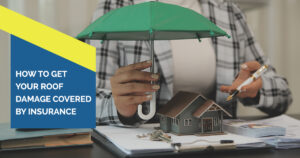There’s a saying that prevention is better than cure, especially when maintaining your home’s roof. Did you know that a well-kept roof can last up to 50 years while neglecting routine inspections can significantly reduce its lifespan? As a roof repair contractor in Stone Mountain, we will teach you how to conduct a thorough DIY roof inspection to identify potential issues before they escalate. Follow this checklist to assess the condition of your roof effectively and ensure it remains a strong shield against the elements.
Safety Precautions and Required Tools
A thorough roof inspection requires you to prioritize safety above all else. Before climbing onto your roof, assess the weather conditions, wear appropriate footwear, and use safety gear like harnesses and helmets. Additionally, a buddy system should be ensured; having someone on the ground can be particularly beneficial in emergencies.
Essential Safety Equipment
Ensure safety around your home with the right equipment. Use sturdy ladders rated for your weight, a safety harness, and non-slip shoes. If you have a steep roof, consider using a roof harness that secures you to the roof while you work, safeguarding against falls.
Necessary Inspection Tools
At the heart of a roof inspection is a set of necessary tools to assess your roof’s condition accurately. These include a flashlight for dark areas, binoculars for a distant view, a moisture meter to detect leaks, and a digital camera to document any issues you find.
The tools required for your inspection enhance your safety and improve the efficiency of your assessment. A flashlight helps illuminate dark corners, while binoculars provide a closer view of hard-to-reach areas. A moisture meter is invaluable for identifying hidden leaks, which could become costly repairs if left unchecked. Finally, a digital camera lets you document any concerns, ensuring you have a visual record for consultations with your roofing companies.
Exterior Roof Inspection
One of the most important steps in your DIY roof inspection checklist is the exterior roof inspection. This phase involves a thorough visual examination of your roof’s materials and structures from the outside. Look for deterioration, damage, or wear that could indicate potential problems.
Shingle Condition Assessment
After inspecting your roof, focus on the condition of your shingles. Check for missing, cracked, or curled shingles, which can expose your roof to water damage. The lifespan of asphalt shingles is typically around 20 years, so if yours are nearing this age, consider planning for a roof replacement. Regular assessments can prevent leaks and structural damage in your home.
Flashing and Vent Inspection
The flashing and vents are vital components that protect your roof from moisture. These metal details should be securely attached and free of rust or damage. If you see any issues, addressing them promptly can help prevent significant leaks and water intrusion into your home.
Ventilation is equally vital to your roof’s health and can prevent heat and moisture buildup in your attic, which may lead to serious mould problems. Ensure vents are unobstructed, and inspect areas around them for damage or gaps that could compromise your roof’s performance.
Gutter System Evaluation
A thorough evaluation of your gutter system is vital for optimal roof function. Check for blockages, leaks, or sagging, as these can lead to water overflow and potential damage to your roof and home. Keeping your gutters clean and functional protects the structural integrity of your roofing system.
Understanding how your gutter system works with proper drainage directing water away from your roof and foundation is vital for long-term home protection. According to industry statistics, clogged gutters can lead to roof leaks and may cost homeowners an average of $2,300 in repairs annually. Regular inspections and cleaning are preventative measures to keep your roofing and overall home in prime condition.
Interior Inspection Signs
All homeowners should pay close attention to the interior signs of roof damage, as these can indicate more serious underlying issues. Signs such as water stains, mould growth, or peeling paint on the ceiling and walls can signal leaks that may have originated from your roof. Addressing these issues promptly can save you from costly repairs and help maintain your home’s integrity.
Attic Assessment
Look for any signs of water intrusion or moisture buildup around your attic. These may include damp insulation, mold or mildew, and dark spots along the rafters. Ensure proper ventilation, as poor airflow can contribute to condensation and lead to further damage. Inspecting your attic at least twice yearly can keep potential issues at bay.
Ceiling Warning Signs
The condition of your ceilings can reveal significant information about your roof’s health. You should be alert for signs such as sagging areas, cracks, or brown stains indicating persistent leaks. Act quickly if you notice any of these warning signs, as they can lead to structural damage and may even compromise your home’s safety. Interior signs, like sagging ceilings, often stem from prolonged exposure to moisture and can lead to mold growth and deteriorating drywall.
Common Roofing Problems
Many homeowners encounter roofing problems that can lead to costly repairs if neglected. Common issues include missing or damaged shingles, leaks, improper drainage, and deterioration of roofing materials. Awareness of these problems will help you take the necessary steps to maintain your roof’s integrity, ensuring your home remains safe and protected.
Water Damage Indicators
Water damage indicators, like stains on your ceilings or walls, can be a strong sign of a failing roof. Additionally, if you notice any mold or mildew growth in those areas, it indicates that moisture is seeping through your roofing materials, demanding your immediate attention.
Structural Issues
Damage to your roof’s structure can lead to severe consequences, including compromised safety and costly repairs. Signs of structural issues may include sagging areas, visible cracks, and loose materials, which can threaten your entire roofing system.
However, understanding how structural integrity affects your roof is vital. If you observe any sagging or noticeable dips in your roofline, this could indicate that the underlying framework is weak or compromised. It’s important to address these issues promptly to prevent a total roof failure, which can be hazardous for your home and family.
Ventilation Concerns
Inadequate ventilation across your roof can lead to various problems, including heat buildup and moisture retention, which may result in structural damage over time. Proper ventilation is important to extend the life of your roof and maintain optimal indoor temperatures.
A well-ventilated roof helps regulate attic temperatures, allowing for better air circulation and moisture control. Without it, your roofing materials can deteriorate rapidly, leading to expensive repairs. It’s recommended that you assess your ventilation system regularly to ensure it’s functioning effectively and protecting your home.
Documentation and Record Keeping
Unlike many aspects of home maintenance, proper documentation and record keeping for your roof inspections can significantly enhance your ability to track its condition over time. By keeping organized records of your inspections, repairs, and related expenses, you create a comprehensive history that not only aids in future maintenance but also increases the value of your home.
Inspection Checklist
Below is an effective inspection checklist you can follow during your roof evaluation. Ensure to include items such as checking for loose shingles, inspecting flashings, assessing drainage systems, and looking for signs of wear and tear. Having a systematic checklist not only helps you be thorough but also ensures that you maintain clarity when discussing any issues with roofing contractors later.
Photo Documentation
Consider taking detailed photos during your roof inspections to further enhance your record keeping. Visual documentation can provide a clear snapshot of your roof’s condition and serve as a helpful reference for future evaluations or when discussing repairs with professionals.
Keeping organized photo documentation helps you visually track changes and potential problem areas and is a valuable resource when working with contractors. Having before-and-after photos can illustrate the extent of damage and the effectiveness of repairs, which may enhance communication and speed up the repair process. Additionally, photos can safeguard your investment by providing evidence in case you need to file a claim, ensuring that your roof remains in good condition for years.
When to Call a Professional Roofing Companies
Now that you’ve completed your DIY roof inspection, knowing when it’s time to involve a professional is imperative. If you find extensive damage, missing shingles, or signs of leaks, it’s advisable to consult with a roofing expert. Your roof plays a vital role in protecting your home, and neglecting significant issues can lead to costly repairs down the line. A professional roof repair contractor can provide a detailed assessment and necessary solutions to ensure your roof remains in optimal condition.
Emergency Situations
Along with regular maintenance, be vigilant during severe weather events. Call a professional immediately if you notice significant leaks, sagging, or dislodged shingles following a storm. Addressing these issues quickly protects your home from further damage and safeguards your family’s well-being.
Maintenance vs. Major Repairs
The distinction between routine maintenance and urgent repairs can significantly affect your roofing strategy. Regular maintenance typically involves minor tasks, while major repairs deal with substantial structural issues. Knowing where your roof stands can help you make informed decisions about your investment.
Maintenance, such as cleaning gutters and inspecting small leak signs, is imperative for your roof’s longevity. On the other hand, if your inspection surfaces problems like extensive mold, significant leaks, or structural damage, it’s time to contact a professional. Delaying major repairs can lead to skyrocketing costs, as minor issues can escalate quickly, affecting the integrity of your entire roofing system.
To wrap up
You can proactively safeguard your home by drawing together the insights from this DIY Roof Inspection Checklist. Regular inspections can prevent costly repairs; homeowners who maintain their roofs can save up to 25% on unforeseen repair costs. By following this guide, you enhance your ability to identify potential issues early. If you find significant damage or require professional assistance, consider contacting My Pro Roofing. We provide free roof inspections and other roof repair services in Stone Mountain.
FAQs
Q: What should I include in my DIY Roof Inspection Checklist?
A: Your checklist should include the following items: checking for loose, damaged, or missing shingles; inspecting the roof transitions and flashing for leaks; examining the gutters and downspouts for debris; looking for signs of rust or corrosion on roof elements; and checking the attic for moisture or water stains.
Q: How often should I perform a roof inspection?
A: It is advisable to perform a roof inspection at least twice a year—once in the spring and once in the fall. Additionally, after severe weather events such as storms or heavy snowfall, an inspection should be conducted to assess potential damage. Regular inspections can help maintain the roof’s integrity and protect the overall value of your home.
Q: What are the benefits of hiring a professional for roof inspections?
A: While DIY inspections can be effective, hiring a professional roofing contractor can thoroughly evaluate your roof and provide various benefits. Professionals are trained to spot subtle issues that may go unnoticed by untrained eyes, and they often have access to equipment that makes inspections safer and more accurate. You can visit My Pro Roofing for professional roof repair services in Stone Mountain.





